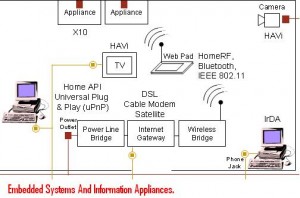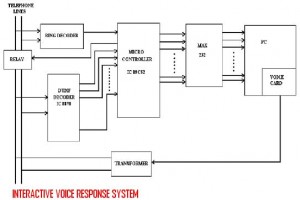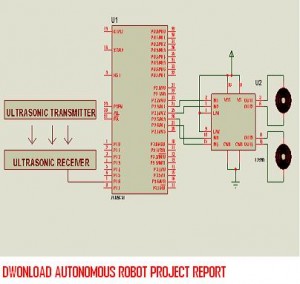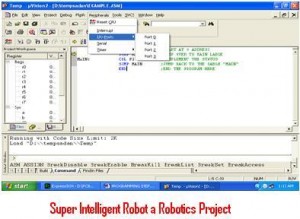The software written for embedded systems is often called firmware, and is stored in read-only memory or flash convector chips rather than a disk drive. It often runs with limited computer hardware resources: small or no keyboard, screen, and little memory. 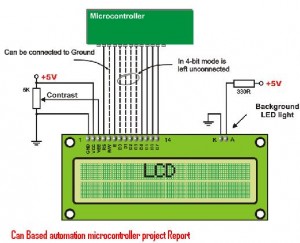
Why this project?
In the present Can Based automation microcontroller project we are demonstrating the applications of the CAN protocol in the Car Automation.
Here we are showing the Antilock Breaking System (ABS) and the Automatic Climate Control System.
The ABS brake system is the greatest innovation in active safety for cars that has saved many lives. The Anti-lock Braking System is designed to help the driver maintain steering control during hard braking, especially in slippery conditions.
How it works?
Imagine, you are driving a car without ABS on a slippery road (e.g. after a rain or snow). Suddenly, you notice something on the road right in front of you.
You hit the brakes, and try to turn aside, but the steering doesn’t work; the car just skids out of control. Why, because all the wheels are locked up while you are holding down the brake pedal. As a result, you lose the ability to steer the vehicle.
The four-wheel ABS can help in situations like this. It prevents the wheels from locking up, helping you maintain steering control during braking. In a similar situation, driving a car equipped with four-wheel ABS, it would be easier for you to steer your vehicle while braking.
Major components of the typical ABS system include speed sensors (one at each wheel), an electronic control unit (ABS computer) and a hydraulic control. The ABS computer constantly monitors the signal from each wheel speed sensor.
When it senses that any of the wheels are approaching lock up during braking, the ABS computer sends the signal to the hydraulic control unit, which modulates the braking pressure for a corresponding wheel(s) preventing it from locking up. Today’s automatic climate control systems allow hands-free temperature regulator, whether hot or cold. Once you set a temperature on your car’s automatic climate control system, it should maintain that temperature regardless of what’s going on outside.
Today’s automatic climate control systems allow hands-free temperature regulator, whether hot or cold. Once you set a temperature on your car’s automatic climate control system, it should maintain that temperature regardless of what’s going on outside.
CAN is a multi-master broadcast serial bus standard for connecting electronic control units (ECUs).Each node is able to send and receive messages, but not simultaneously: a message (consisting primarily of an ID usually chosen to identify the message-type/sender and up to eight message bytes) is transmitted serially onto the bus, one bit after another this signal pattern codes the message (in NRZ) and is sensed by all nodes.
The devices that are connected by a CAN network are typically sensors, actuators and control devices. A CAN message never reaches these devices directly, but instead, a host processor and a CAN controller are needed between these devices and the bus.
If the bus is free, any node may begin to transmit. If two or more nodes begin sending messages at the same time, the message with the more dominant ID (which has more dominant bits, i.e., bit 0) will overwrite other nodes’ less dominant IDs, so that eventually (after this arbitration on the ID) only the dominant message remains and is received by all nodes.
Conclusion:
The project “CAN BASED CAR AUTOMATION SYSTEM” has been successfully designed and tested. It has been developed by integrating features of all the hardware components used. Presence of every module has been reasoned out and placed carefully thus contributing to the best working of the unit.

